
Garlic is an incredibly useful and versatile ingredient. It is not only a pungent flavour enhancer, it is also excellent for your health.
Even before it is harvested, garlic can be a very useful crop to grow. It can repel, confuse or distract a wide range of pest species, and so can be an excellent companion plant.
And if you grow hardneck garlic, you can harvest a secondary yield of garlic scapes.
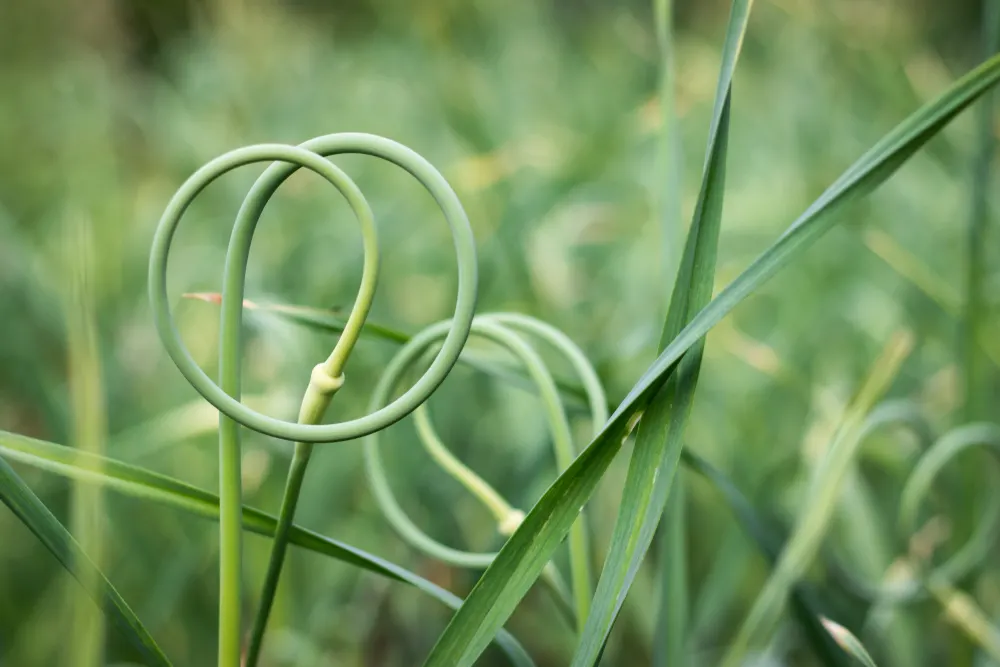
But we don’t all have endless space, and may not have large beds or rows in which to plant our garlic and other edible crops.
The good news is that you can grow garlic wherever you live – in pots or in any container garden.
As long as you choose the right pots, and growing medium, plant your garlic at the right time, and place pots in the right places, it can be a relatively easy crop to grow.
Choosing the Right Garlic
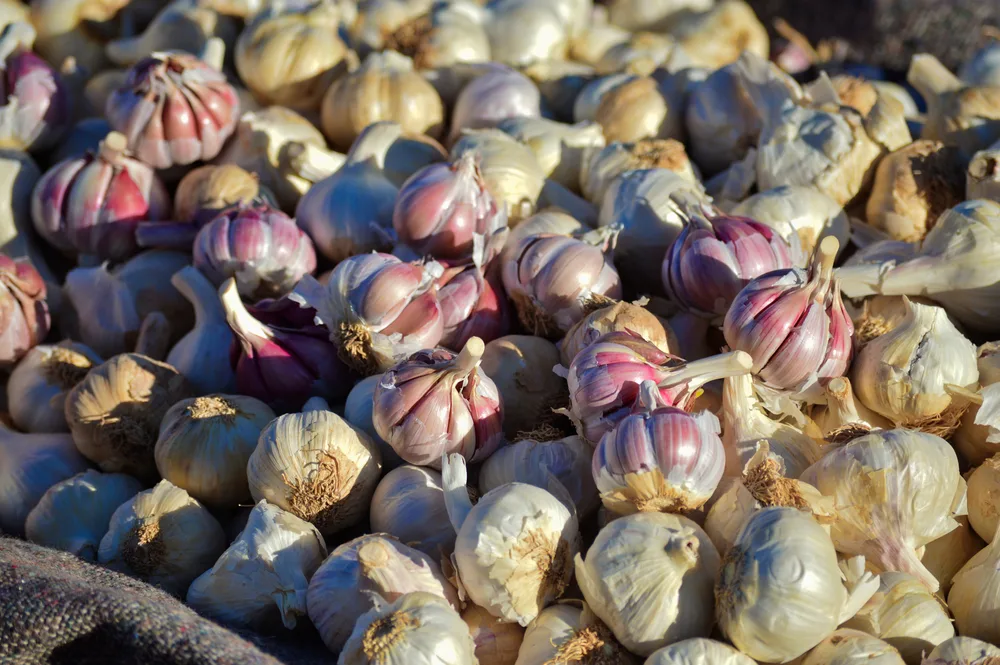
Growing garlic successfully in pots begins with choosing the right variety or varieties for where you live.
There are two main types of garlic sets, called hardneck and softneck.
Hardnecks have a long, flowering stem (called a scape) that grows through the bulb’s centre. Softnecks tend to have a greater number of cloves, as they lack the hard stem in the centre. They generally produce around 8 to 20 cloves per bulb, with some bulbs yielding more than 30.
Hardneck varieties are usually a better option for cool climate gardeners, as they are generally hardier. Hardneck are also the varieties to grow if you would like an additional yield of garlic scapes.
Scapes will not form on softneck varieties. However, softneck garlic is better for warmer climate gardeners, and has a longer shelf life. Larger cloves also mean that the yield can be higher.
There is also perennial garlic – elephant garlic. Though since it has much larger bulbs, you will be able to grow fewer of these in pots.
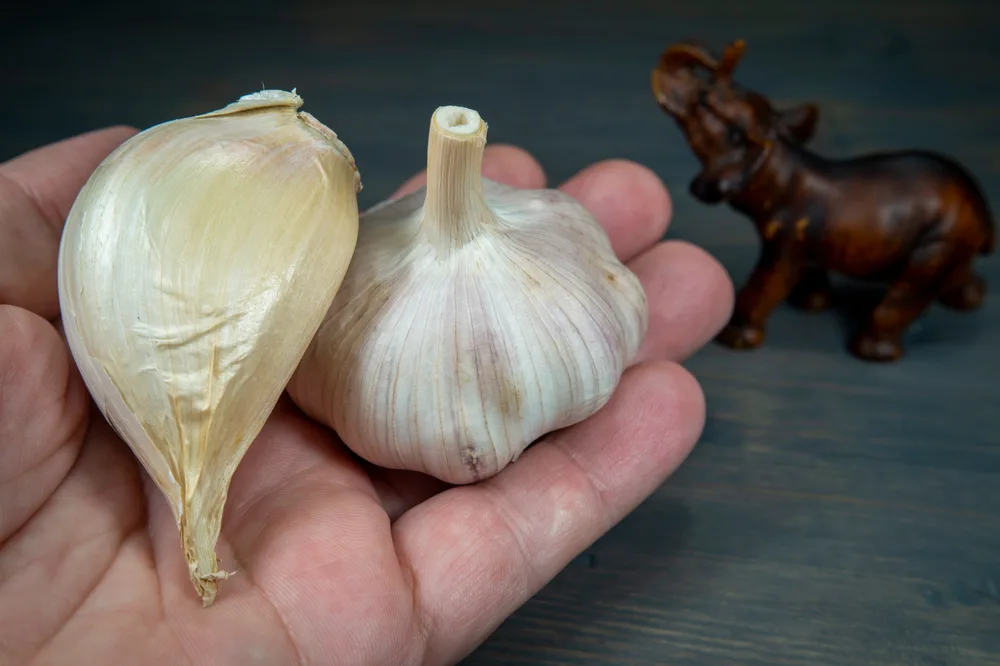
Sourcing Garlic Cloves For Planting
It is not advised to simply plant grocery store garlic cloves. These cloves may have a growth inhibitor sprayed on to prevent sprouting.
Instead, source some cloves for planting from a local garden center, plant nursery or the internet. Below are a number of well reviewed varieties you can purchase on Amazon.
Choosing Your Pot
There are a wide range of pots that you could choose to grow garlic. You can buy pots or planters for the purpose. Or, alternatively, you could reuse old containers or repurpose other old items for the job.
Pot Size
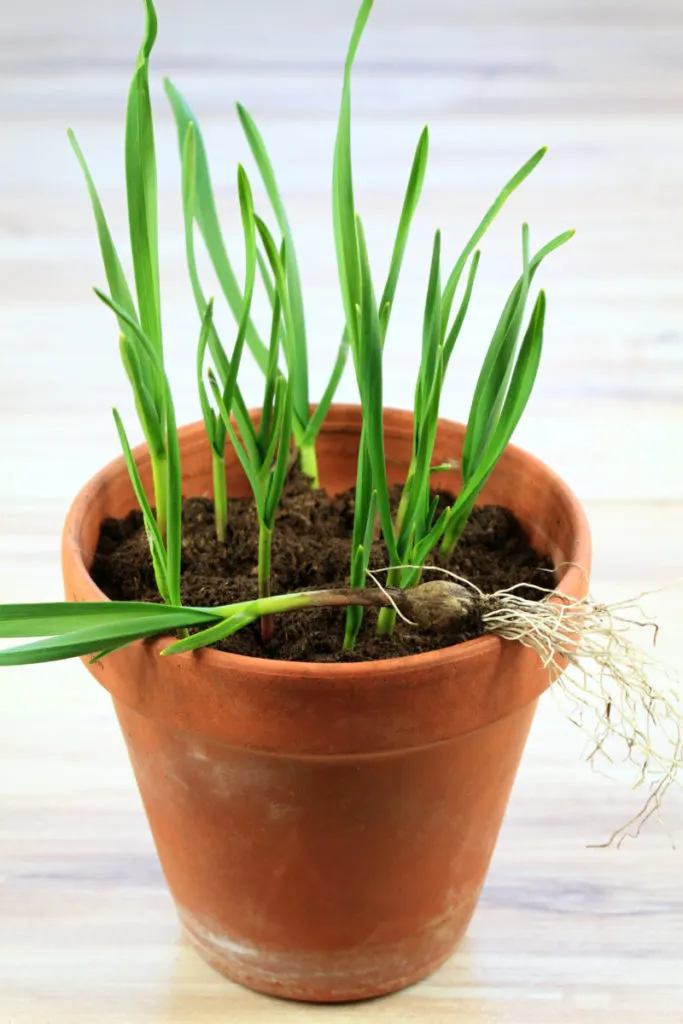
One key thing to remember when choosing a pot or container is that it should be at least 6 inches deep. Ideally, it will be a little deeper. Garlic cloves should be planted to a depth of around 2 inches.
Your container should be large enough to space garlic cloves around 3-4 inches apart from one another. (A little further apart if it is a variety with particularly large bulbs). In a planter or container with a surface area of 1 sq ft you would usually be able to plant up to 16 cloves.
Material & Characteristics
Another key thing to remember when choosing a container is that it should be able to keep the growing medium sufficiently moist, but should still be relatively free draining. If you are repurposing an old 5 gallon bucket (or another container) make sure it has sufficient holes in the bottom to ensure that it does not become waterlogged.
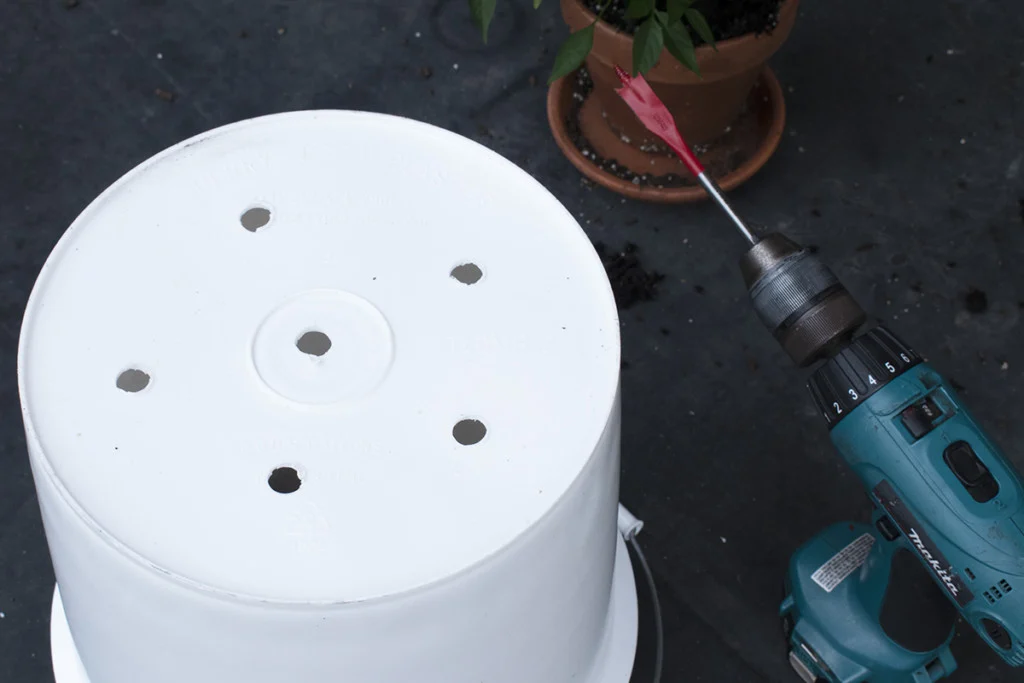
Remember, the material your pot or container is made from will determine its characteristics. Plastic containers will generally retain a little more moisture than those made from terracotta, for example. Terracotta pots are a better choice for the planet. But remember that you will probably have to water them more frequently. Garlic growing in pots does not want to be too wet. But you should not let it dry out too much either.
Container Color
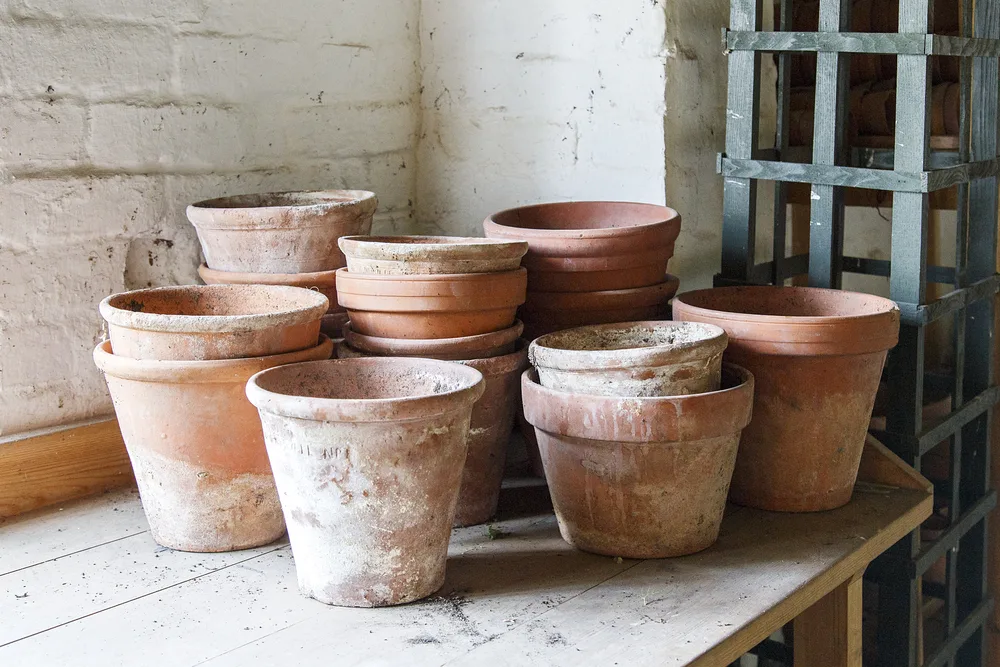
Another consideration is the color of your pots or containers. Black or dark colored containers will catch and absorb more heat. While light colored ones reflect more light and stay cooler. Which option will be right for your needs will depend very much on your climate. And where and when you plan to grow your garlic.
Selecting the Right Growing Medium
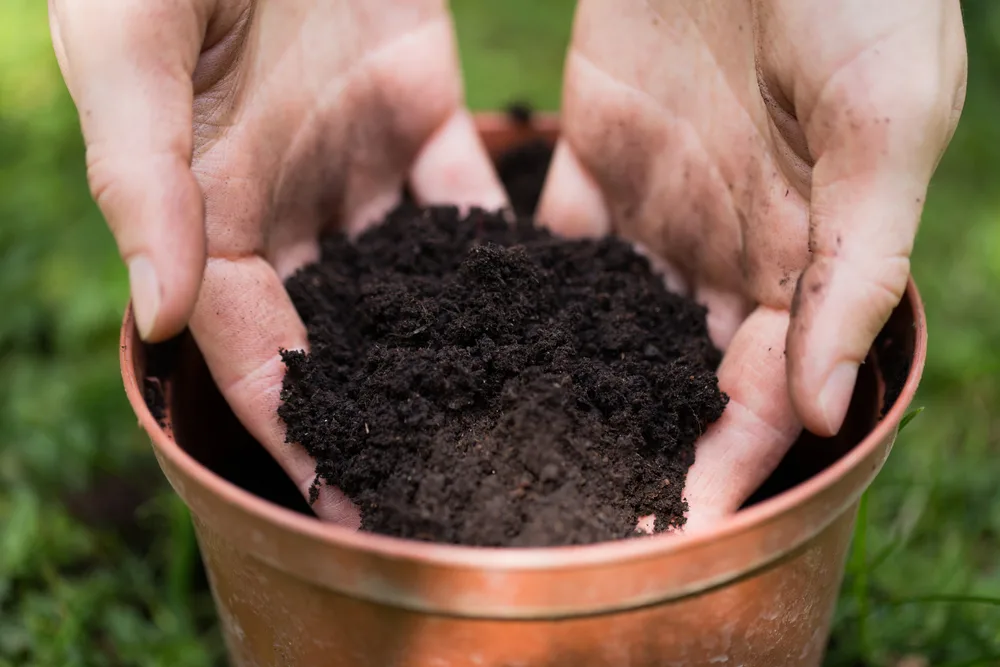
Moisture is crucial not only when choosing your container, but also when choosing your growing medium. One of the main challenging when growing garlic in pots is making sure the roots are not waterlogged, yet do not become too dry.
It is also important to make sure that the growing medium is relatively fertile, and high in nutrients. Garlic needs a good, relatively fertile soil to grow well – though it is more important that it be moist yet free-draining.
Any good, free-draining potting mix with the addition of some homemade compost should work well. If using a denser and less free-draining potting mix, adding some grit or sand could help ensure the medium does not get too wet.
Once you have planted your garlic cloves in your growing medium (taking care not to damage the bases of the cloves, and placing them upright in the soil), it is also a good idea to mulch well.
A good quality organic mulch will help to retain moisture and suppress weed growth. It can also add nutrients slowly over time. And in a cold climate, is crucial in protecting the roots of garlic from the winter cold. Fall leaves are ideal for this purpose. Though other materials, like straw, bracken etc. could also be used.
When To Plant Garlic
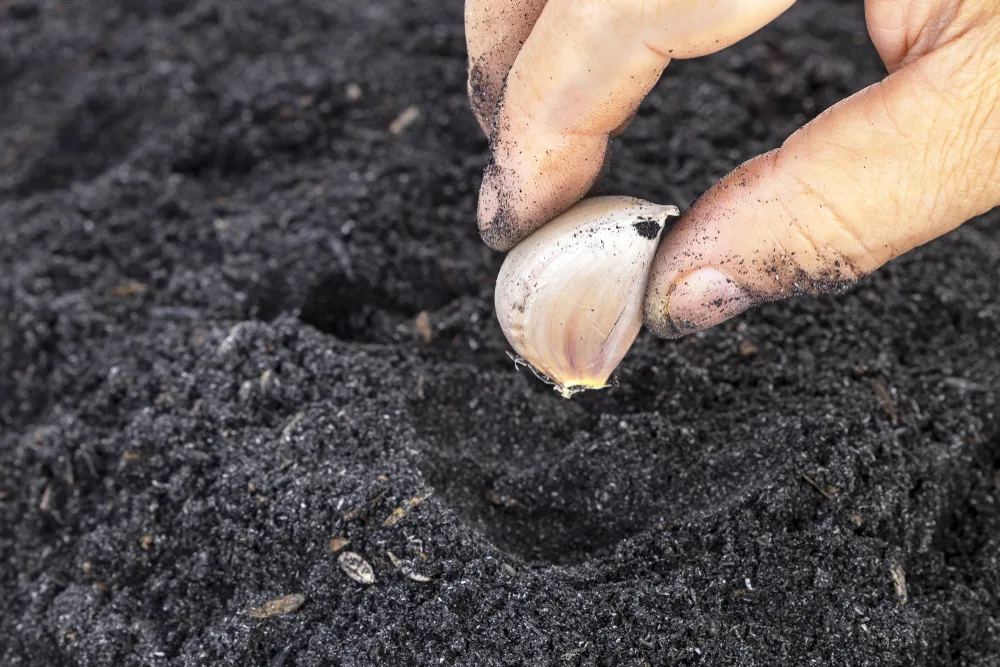
Once you have chosen your garlic, pots or containers, and growing medium, the next stage is of course planting.
Garlic is best planted in the fall or early spring.
In cooler climates, fall planting is ideal because it allows roots to develop before the freeze, and foliage will get off to a romping start in early spring.
Garlic should generally be planted in around September to early November, around the first frost date in your area but before a hard freeze. Garlic planted in pots in fall will usually be ready for harvest in around June.
Note: Mulch is essential to protect plants over the winter months and in early spring in colder regions. Young garlic shoots can not survive in temperatures below 20°F (-6°C).
Spring planting is best undertaken early in the season:
Zones 5-6: Sow sets (individual cloves) for summer in March/April.
Zones 7-8: Sow sets for summer in around February.
Zones 9-10: Sow sets for summer in January/ early February.
Of course, garlic sown in spring will only be ready for harvest much later – around the end of the summer season.
Where To Place Garlic in Pots
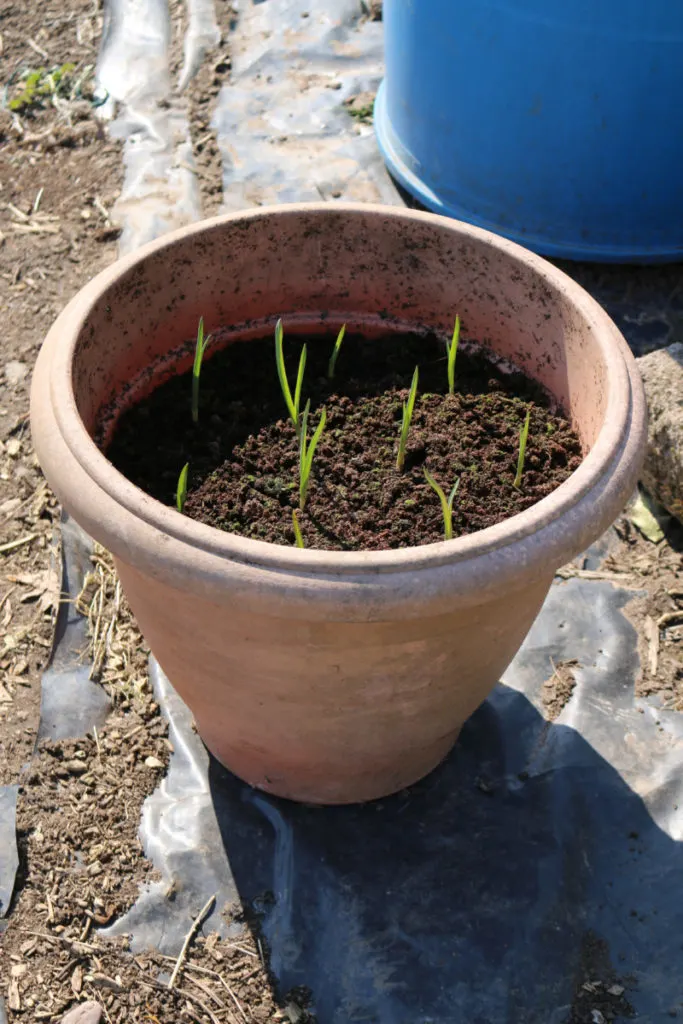
Where you choose to place your pots or containers is very important.
Think about sun and shade, proximity to watering points, and to your kitchen. In cooler climates, make sure your container or containers are placed in a sunny and sheltered spot, to reduce the risk of winter damage when sowing in fall. In summer climate zones, garlic can be successfully grown in partial shade, where watering needs over summer will be reduced.
It will be easier to tend your garden if the container or containers are close to a water source (whether that is an outside faucet, or a rainwater harvesting system). Placing garlic relatively close to your kitchen can also make things more convenient.
One other thing to consider is that placing garlic in pots close to other container grown fruits and vegetables could help in keeping pests at bay. Garlic can be a good companion crop even when grown in a separate container close by, due to its strong smell.
Caring For Your Garlic
In terms of watering, it is important to keep soil moist but not wet. Generally speaking, you will water well every 3-5 days once plants start to produce a bulb. Cut back watering a couple of weeks before you harvest your crop.
If you are growing a hardneck garlic variety, harvest and eat the scapes as these form. Here are some great recipes for using up your garlic scapes. This will not only provide an additional edible yield. It will also help to make sure the energy goes into bulb formation.
In spring, it can be a good idea to top dress or water with a nitrogen rich fertilizer. Make sure the area around your garlic remains weed free, as they cannot cope with too much competition.
Garlic Companion Plants
One interesting thing to consider when you grow garlic in pots is that they do not need to be grown in isolation. Just as in a bed or in-ground growing area, containers can be used (providing they are large enough) to create polycultures of plants.
Garlic works well when growing in pots alongside carrots, for example. If a cloche or some other form of protection is used, certain carrots and other root crops can be grown over winter with fall planted garlic even in colder climate zones.
Another thing to consider is layering plants in time as well as space. Garlic planted in fall in cooler climes will be forming roots over winter, but will not send up shoots until spring.
You could consider sowing a hardy winter crop such as lettuce or Asian greens in the same container, which can be harvested before the garlic needs the space. (Cloche protection will be required in colder winter areas). Just make sure to replenish nutrients before the garlic pops up in spring.
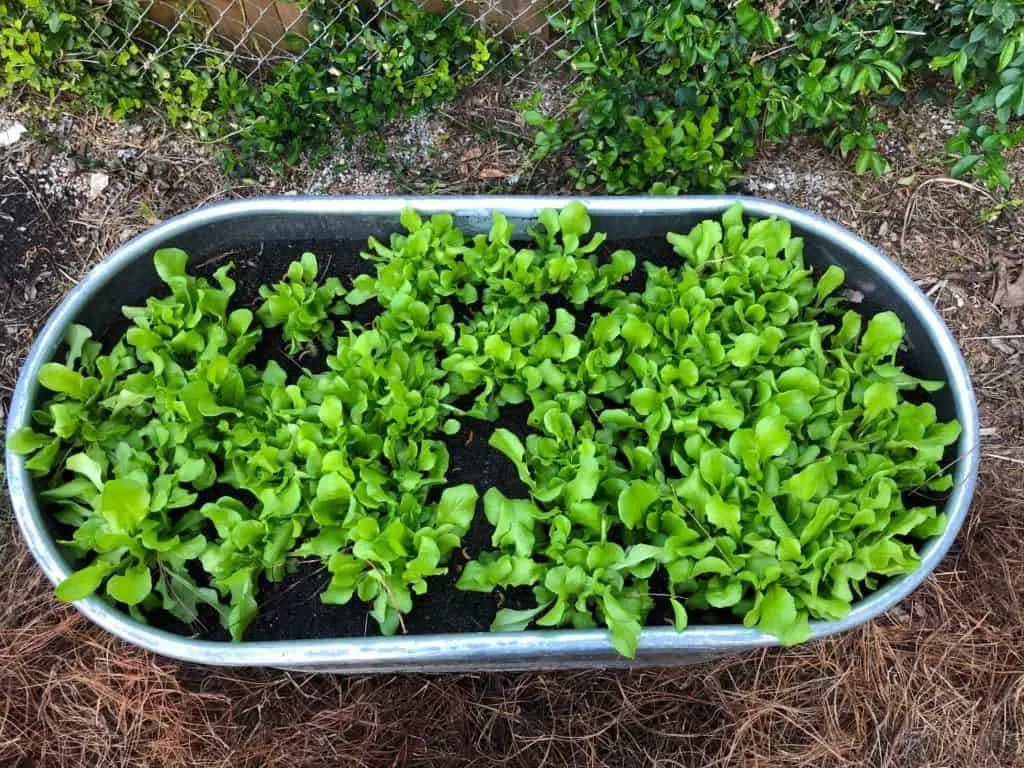
A few garlic cloves can also potentially be planted around the edges of a container used for another crop. As mentioned above, garlic is a great companion for many fruits and vegetables. For example, it could be a good choice to plant in a container that will later house a tomato plant, or some peppers, in the spring.
Harvesting Garlic
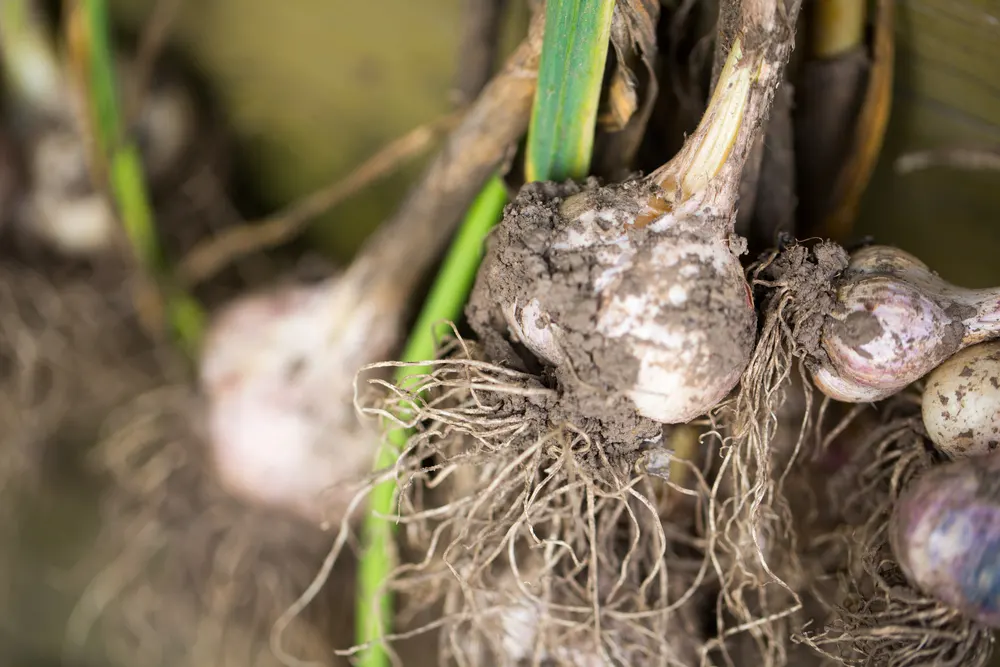
Knowing when to harvest garlic isn’t always easy, and there are some things you should do in the weeks before harvesting.
Take a look at our guide to harvesting, curing and storing your homegrown garlic so it lasts for eight months or more.
Garlic is a great crop to consider for a small-space container garden. It is versatile, both in the garden and in the kitchen. And represents a great choice for making the most of your space year round. Make the right choices and consider your options carefully, and you should be able to grow garlic in pots successfully wherever you live.

Get the famous Rural Sprout newsletter delivered to your inbox.
Including Sunday musings from our editor, Tracey, as well as “What’s Up Wednesday” our roundup of what’s in season and new article updates and alerts.

